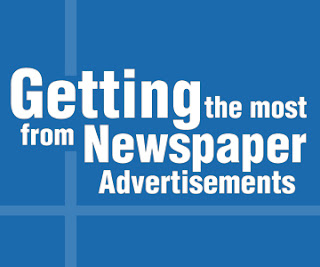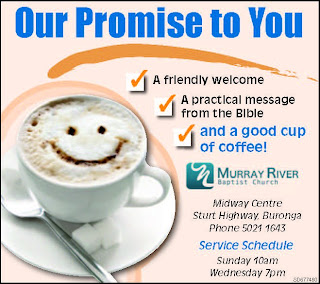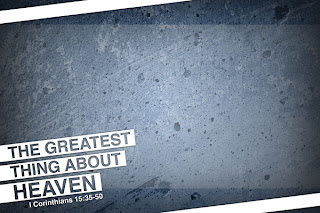We just had our annual church business meeting. Immediately, some of you are falling asleep because that's what you do in business meetings, but here me out! In our meeting, and in most meetings, we passed around the church budget. One of the line items was "Advertising/Promotions." We even are starting a "committee" for this.
Like it or not Graphic Design has made its mark on the church. Church marketing cannot hope to live without it. So I asked myself this question "How much should a church be willing to spend on their Advertising campaign?"
To be perfectly honest with you, I have completely forgotten what number our church had down in the budget for this, but I hope to list many of the costs a church will need to undertake in order to be up-to-date on their design equipment.
This list will be broken down into
Monthly/Yearly Expenses and
One-Time Expenses. I will start with the latter because in the long run, they'll cost you the least amount of money.
One-Time Expenses
As a quick side note, all of these "one-time expenses" are more like "every 5-10 year" expenses, but that's a silly title. You
will need to purchase these again, but not nearly at the monthly or even annual level.
Computer - $500-$1500

Now most churches have a computer. But I'm not talking about that old fossil
you bought 20 years ago. You need a good computer with plenty of hard drive space and RAM. What you buy is up to you. You want something that will last at least 5-10 years. Personally, I prefer a Mac. Now before any Mac haters out there start complaining about their price, most any designer will agree with me. Macs are superior for designers.
Truly, though, you should just ask the person who is planning on doing the design in your church. They may already have a computer that's good enough and you won't even need to buy one. However, it's not a bad idea to have a "design" computer that you know houses all your design resources. That way your not always looking for that flash drive or calling your designer to email you the file again.
Adobe Software - $500-1500

The pricing for this varies as well. If your church is also a Christian School you should be able to slip by purchasing the Academic version from a place like
AcademicSuperstore.com. That will run you about $400. However, if you don't qualify for that, then you'll get stuck paying the big bucks for the Standard version. It needs to be done, though.
This purchase is a MUST. Even if your designer has his own computer, you won't be able to open any of the files he gives you without this critical software. You should plan to purchase a new copy of it every 3-4 versions. I still have Adobe CS2 on my laptop and my wife has CS3. Currently, Adobe is on CS6. It's been about 7 years since I purchased the programs. That's a relatively good amount of time.
The main problem is now going to be compatibility. CS6 will open CS2 files, but CS2 does not like CS6 because it has never heard of it. When your designer upgrades, it may be time to upgrade your software too.
*EDIT* See comments below for information regarding Adobe's new Creative Cloud which offers the programs of the Creative Suite at a monthly subscription fee.
Color Laser Printer - $500-$3000
This probably will be a one time purchase. If you buy a good enough printer you shouldn't need to buy a new one for many years to come. If you are tight on cash though, this
little Lexmark wouldn't be too bad of an option. However, if you can afford and have the office space, a printer like this
Xerox would be more heavy duty and would last longer.
Ideally, you want something that will print at least 11x17 size paper. The Lexmark listed above will not do that. You really should consider biting the bullet and making the big purchase.
Monthly Expenses
Website - $10/yr domains, $20/month hosting
Almost every church should have a church website. I have planned and still hope to cover websites in detail a little more in the future. Most domain names, that is the web address (ex. www.churchmarketingpro.com) cost about $10 a year. It's not a big fee, one you will hardly even notice. That said, your church should scoop up all domain names for your church.

Our church name is Pine Forest Estates Baptist Church. Our church address is pfebaptist.org. I have suggested to the church that we also purchase pfebaptist.com and pfebaptist.net. Com, org, and net are the big three web address types. If you purchase all three and set them to route to your main website, in our case pfebaptist.org, then even if someone types in .com on accident, they will still get to the right place.
Additionally, purchasing domain names like pineforestestates.com, pfebaptistchurch.com pfebc.com, etc. are all smart choices if your church has the budget for it. You want to monopolize your brand. Walmart wouldn't want people to mistype their address and end up at K-Mart's website. Just the same, you don't want a visitor ending up on some other church's website.
 Design Service Subscription - $150/yr ShareFaith, $400/yr Graceway Media
Design Service Subscription - $150/yr ShareFaith, $400/yr Graceway Media
I have talked about this at length in the past. You can visit
this article for more information on which is better for your church. The short version is that ShareFaith has more to offer while Graceway does it better.
Stock Photos - $4-20/picture
Occasionally, designs will call for a high quality picture that you can only get from a stock photo website. Most of these photos are purchased with credits on an individual basis. Set up a church account on a stock photo website and check to make sure their credits don't expire. Then purchase a large pack as they generally offer the best deals.
When purchasing stock photos you will need to be smart. Don't purchase the cheapest photo, they won't be large enough for your design and you will ultimately be frustrated. At the same time, don't buy the largest file possible (that may be 30" wide) when you only need a 4x6 photo for a flyer.
This can make or break a design.
Printing - $50-100/job
Don't go cheap on printing. That's my one piece of advice. Go full color, none of this black and white stuff. I used to work at OfficeMax's ImPress print department. We had a sign that said "Color increases memory retention by 80%." Did you read that? Did it sink in? Color
increases memory retention by
80%.

There's no reason not to go all the way. Use nice paper, use bleeds, get it professionally done. I'm not telling you to print a reminder about someone's baby shower in color, but if you're putting on a production or special event, get an ad printed properly.
The Bottom Line
So what's a good yearly budget cost? Crunching the numbers above, anywhere from $1,000-$2,500/yr depending on the abilities of your church. Anything less than $500 cripples your ability to do well, and I'm tempted to say anything below $1,000 will do the same.
Make sure you plan to strive for excellence in how your church is marketed and advertised.
Did you find this article helpful? Share it with your friends.
Do you have any other comments about cost? Post it below.
Do you have any questions about how much something should cost you? Ask away.
 If you haven't heard the latest scoop, Media Missions is back in action....sort of. Since I decided to reboot the blog, I also decided to change the name. The old name was something I started with at the conception of the idea, but as I gained experience, I realized it wasn't as effective as I though it would be. Now, Media Missions was really all about church marketing, from advertising to printing and social media to powerpoint, more than half of the topics drove home this one essential theme.
If you haven't heard the latest scoop, Media Missions is back in action....sort of. Since I decided to reboot the blog, I also decided to change the name. The old name was something I started with at the conception of the idea, but as I gained experience, I realized it wasn't as effective as I though it would be. Now, Media Missions was really all about church marketing, from advertising to printing and social media to powerpoint, more than half of the topics drove home this one essential theme.




 9:43 PM
9:43 PM
 T.L. Branson
T.L. Branson

























































